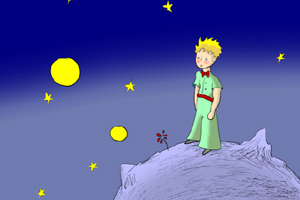Dawn's mission to Vesta--and ultimately on to the larger Ceres—might be characterized as a Solar-System-scale geological expedition. Much as geologists may probe a deep layer of rock on Earth to learn about our planet's geological past and evolution, Dawn will be probing Vesta and Ceres to learn about the Solar System's formation and development.
Vesta and Ceres—classified as asteroid and dwarf planet, respectively—are the two largest protoplanets, each quite different from the other in potentially informative ways. Vesta is a dry airless body, while Ceres may contain water (ice) and maybe even a thin atmosphere. Being protoplanets, both objects went through a process of differentiation early in their history, forming a core and a crust not unlike planets do.
As we understand the formation of the Solar System today, both from exploration of our own and observation of other planetary and pre-planetary systems at different stages of development, it all started with the Protosolar Nebula: the cloud of gas and dust that began the long gravitational collapse that ultimately gave birth to the Sun, planets, asteroids, and comets. Little by little, dust particles in the nebula stuck together, forming larger and larger clumps. Eventually, gravity began to play a stronger role in the clumping process, with the larger clumps pulling in more and more dust and neighboring clumps, snowballing ever larger.
Clumps that reached sizes of a mile or so across earned the title "planetesimal," and when planetesimals grew into objects hundreds of miles across, they graduated to the rank of protoplanet. This career ladder climbing went on until most of the raw material had been swept up. At this point, if the snowballing process had produced a Sun-orbiting object that was large enough to pull itself into a spherical shape and also "dominate" the region of space it was in (according to International Astronomical Union requirements), then it could be called a planet. If not, other classifications, like dwarf planet or small Solar System body, might apply…if you have a complaint, register it with the IAU….
In the case of Vesta and Ceres, which are on the order of 300 and 600 miles across, roughly and respectively, their career aspirations in planetary stature building are thought to have been crushed by the formation of Jupiter—perhaps as how a type-A personality with powerful career ambitions might derail a coworker by grabbing all the promotions….
What world might have been if Vesta and Ceres had finished their work and not ended up in the Mail Room of the Solar System? Well, if you took all of the material present in the Main Asteroid Belt today and brought it together into one object, orbiting the Sun between Mars and Jupiter, you would have a sphere probably no bigger than 900 miles across—less than half the diameter of Earth's Moon—so at best it might rate as a dwarf planet.
However, it is believed that most of the original mass of the Main Belt has been lost, scattered to other places in the Solar System by that ambitious Jupiter…so who knows what this world that never was might have been if circumstances had been different?
37.8148 -122.178
 Illustration from The Little Prince
Illustration from The Little Prince